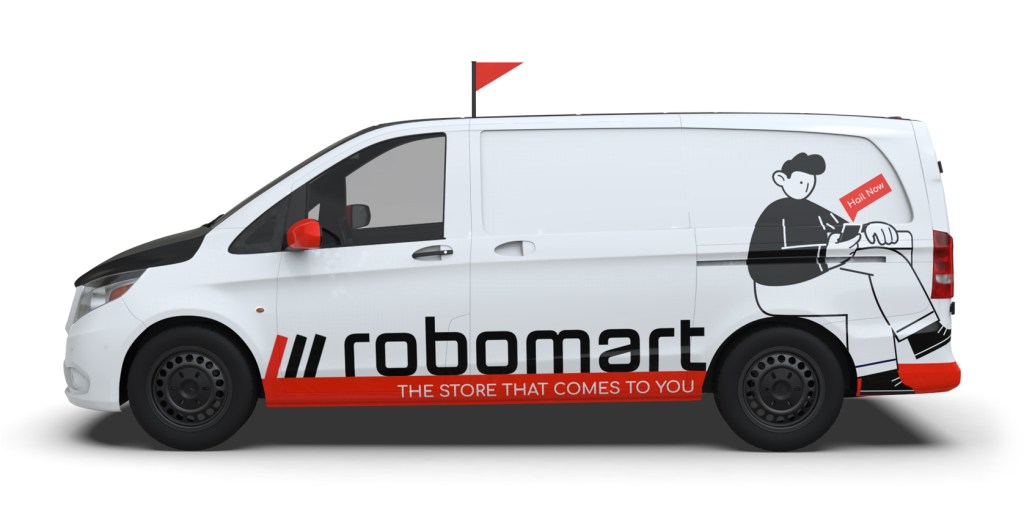
I believe it was famed Jedi Master Yoda, who once said it’s difficult to prognosticate because, “Always in motion, is the future.” For what it’s worth, a little motion in our future is definitely welcome after a year being stuck at home.
Having said all that, I have two food tech predictions for 2021, and both have to do with the future of commerce. Next year will be the year grocery stores go all Vegas on us, and food commerce will hit the road.
See your (brand) name in lights
Starting next year, walking into grocery (and probably convenience) stores will feel like stepping into a casino. I don’t mean you’ll soon be gambling on which milk is the freshest. Rather, your eyes will be filled with big, bright screens blasting ads at you.
Instead of looking through glass to pick your soda or finding a paper price tag below those Wheat Thins, you’ll find screens showing you full motion-video ads, making prices dynamic and upselling you on other products.
For a taste of how this all works, check out this gif from Cooler Screens:

While the idea of Blade Runner-style screens blaring at you as you pick up a pint of Ben & Jerry’s might give you a headache, this type of transformation seems… inevitable. In fact, companies like the aptly named Cooler Screens and AWM Smart Shelf are already starting to install this technology.
Cooler Screens has plans to roll out its screens to 2,500 Walgreens locations across the U.S. When it hits that 2,500 mark, Cooler Screens will have a viewing audience the same size of The Super Bowl — every month. That is a lot of eyeballs, and an opportunity brands won’t want to pass up.
Retailers will also appreciate the ability to run flash sales and promotions, changing prices on the fly, as well as the ability to sell you more stuff. Buying a six-pack of beer? The interactive screen will suggest picking up a frozen pizza while you’re at it.
Consumers might even appreciate the new screens as well. Displays will change as new advertisers and specials go live, making trips to the store a little more… exciting is probably too strong a word, but the experience will certainly be different each time. Just pity the poor parents who will have to pry their screen-loving kids away from the Sprite display.

Wheels down
Screen-fearing parents may not even need to go to the store, however, as the store will come to them.
While it won’t become mainstream in 2021, mobile commerce is going to hit the road, as it were, next year. Thanks to robots, autonomous driving and cashierless checkout, food retail and restaurant meals will come to you.
I’m not talking about point-to-point delivery, like ordering through DoorDash. I’m talking about roaming vehicles filled with food that you can hail like a taxi.

There are actually a number of companies working on this at different scales. On the smaller end, Cheetah Mobile makes the FANBOT, a self-driving robot that roams shopping malls, airports, hotel lobbies and other high-traffic areas. FANBOT’s stocked with 66 drinks, snacks and other items so customers can grab something quick while on the go, without having to go into a store.
Slightly larger is Yo-Kai’s plan to make mobile hot ramen vending machines. Yo-Kai has developed an autonomous restaurant-on-wheels that will initially drive around college campuses where hungry students can hail it and buy a delicious bowl of ramen on the spot.

BIB Technologies also unveiled its Automato, an automat on wheels. This vehicle will have racks of cubbies filled with meals and parked in high-traffic areas, allowing hungry pedestrians to grab a bite using their mobile phone.
The largest in this mobile commerce scenario is Robomart, which has launched its first store-on-wheels operation. Initially, Robomart set out to make a pod-like, autonomous vehicle stocked with food that would drive around neighborhoods and could be summoned via mobile app. But local governments are still wary about fully autonomous vehicles just cruising around on public streets.

In response, Robomart pivoted, made its vehicle bigger and added a human driver to assuage concerned civil servants. Shoppers still hail the store via mobile app, and then pick out what they want when the vehicle arrives, getting charged automatically for what they take. Robomart launched in West Hollywood this month with a drug store on wheels, and has plans to follow that up shortly with a mobile grocery store.
Hopefully, the pandemic will recede in 2021, allowing us to all to be as mobile as our commerce next year.


Leave a Reply